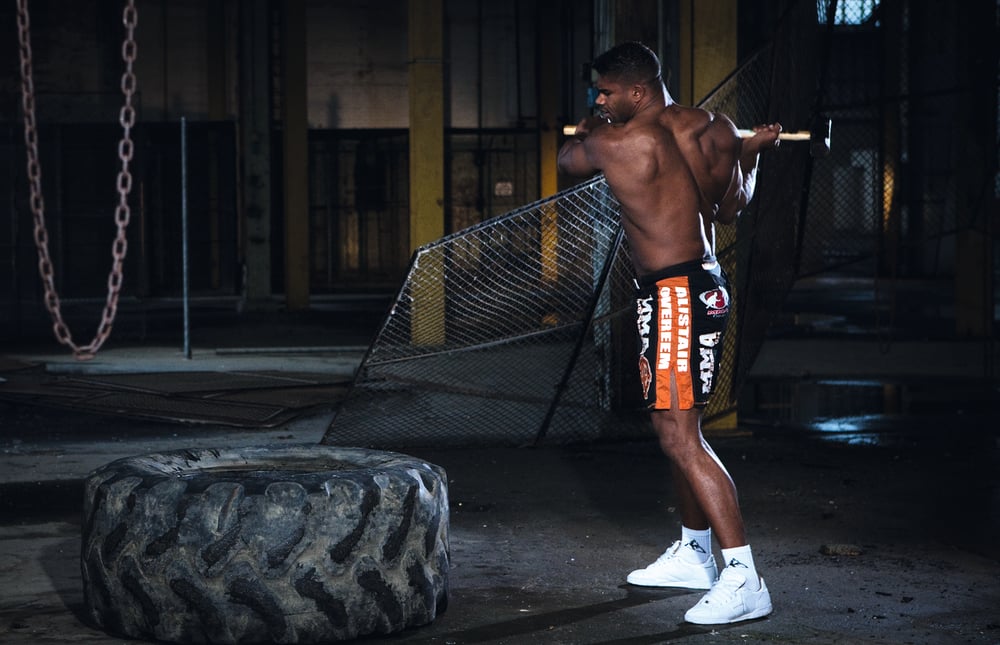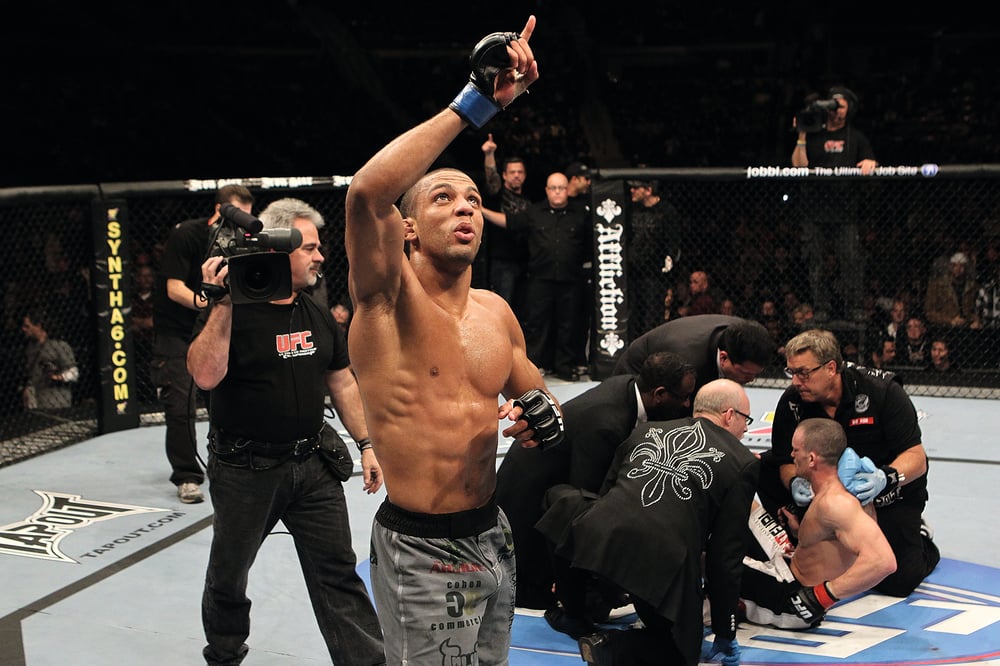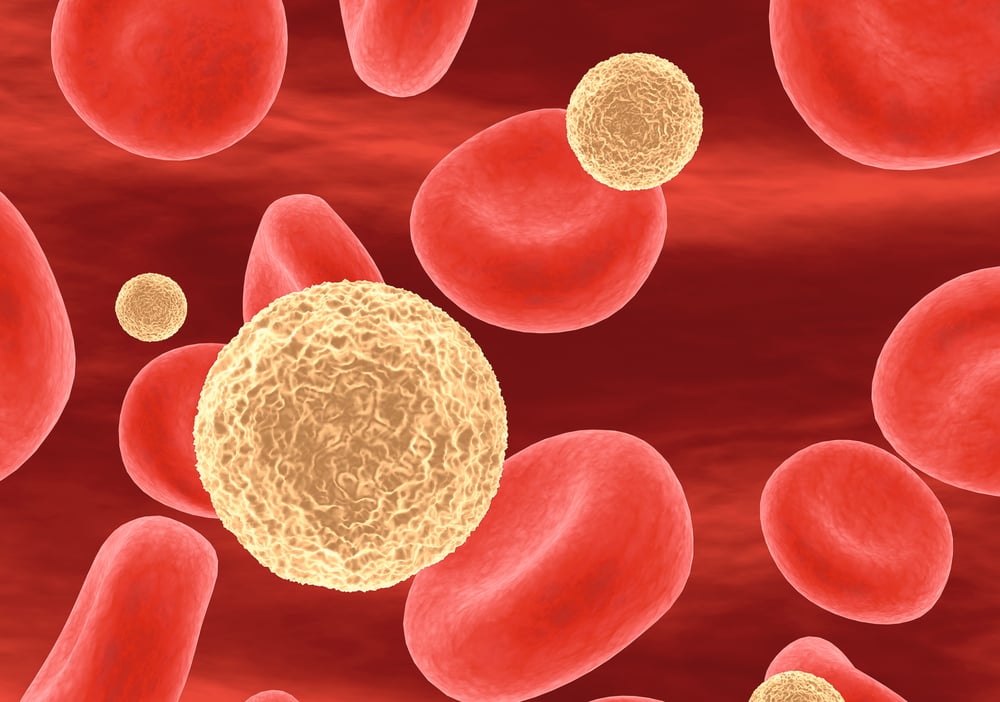
Issue 074
April 2011
Science, ingenuity and ambition are driving MMA forward. From acrobatic fighters to training droids, genetic mapping to all-girl fight cards, the future is now
FUTURE PROMOTIONS
Kick-ass chicks, official streams and Eastern behemoths
After holding 24 events in 2010, the UFC has ambitions of holding upwards of 30 events this year. Their march across new territories continues in 2011, with the UFC returning to Brazil, and looking to lucrative new markets in India, Scandinavia, Italy, Scotland and Asia.
The Ultimate Fighter could even be staged abroad, with UFC president Dana White mentioning in an interview last year it could be taken to the Middle East. The show’s contract with US station Spike runs out this year, but the anticipated huge Nielsen ratings from the clash of upcoming coaches Lesnar and Dos Santos means it will almost certainly be renewed.
There has been talk of a UFC television or internet channel for a number of years now, and Dana has made it clear he see’s broadcasting fights via the Internet as a huge goldmine for the UFC in the future. The recent Fight for the Troops event showcased two fights via the UFC’s Facebook page, a possible sign of things to come.

MMA in general is gaining more TV time, with Bellator securing a three-year deal to be broadcast on MTV2. “We are thrilled to partner with MTV2, which has such a strong audience of hard-to-reach young guys,” says Bellator CEO Bjorn Rebney. Considering MTV2 has the highest concentration of males 12–34 on TV, it is no surprise Bellator are delighted to be screening their eight-man tournaments on the channel.
That same format has gained much publicity in recent months, mostly because of the recently announced Strikeforce heavyweight grand prix. The GP commences what Strikeforce president Scott Coker calls ‘phase two’ of the promotion’s development, and could lead to the first Strikeforce pay-per-view event.

Another company who favor tournament brackets is Polish promotion Konfrontacja Sztuk Walki (KSW). It claims to be the most watched MMA show worldwide, with a massive local audience on Polish terrestrial TV. KSW’s regular four-and eight-man tournaments showcase the rising number of Eastern European fighters, including five-time World’s Strongest Man champion and Polish celebrity Mariusz Pudzianowski. Notable names to appear at KSW events include UFC fighters Igor Pokrajac and Alexander Gustafsson.
Elsewhere on the globe, two all-girl promotions are continuing their growth in Japan. Valkyrie, founded in 2008 and the sister of the Cage Force organization, and Jewels, founded in 2008 too but existing before that as Smackgirl. Jewels recently held its eleventh event, doubling its usual audience with over 1000 people in attendance. The continued rise of women’s MMA could see them appear in the UFC sooner rather than later, and Strikeforce already prominently feature female competitors like wrecking machine Cristiane ‘Cyborg’ Santos.

FUTURE TRAINING
Yoga, gymnastics and cavemen
The newest practice I’m doing is actually yoga. It’s more of a re-discovery; it’s been around for years. It’s great for flexibility and mental visualisation,” says Kevin Kearns, the rated Boston-based strength and conditioning coach who has trained fighters like Kenny Florian. “In yoga you talk about getting heart-centred, tuning in to what your intentions are. If you look at old martial arts, they honored the methodology behind the movement. Fighters push, push, push, and don’t do the recovery work.”
Certainly, part of the future of MMA training lies in the past. The modern gladiators are reconnecting with methods adopted by their warrior ancestors. But crucially, they do so with contemporary knowledge interspersed.
Rashad Evans and formerly Georges St Pierre’s strength and conditioning coach, Jonathan Chaimberg, spoke about this contrast of old methods, with new knowledge: “Gymnastics is interesting; guys like Georges are using that. I wouldn’t call it specifically gymnastics. We have a Pure Motion cage where you can see guys doing explosive movements, almost like the uneven bars, but we’ll call it an explosive chin-up or something like that.”
Incorporating gymnastic-like exercises is part of a wider movement towards practical, MMA-specific training designed to simulate the actions and movements used in a fight. There are no more chest, bicep or leg days. “People are starting to realize that the full-body workout is much more effective than training individual body groups,” notes Kevin Kearns. “Fighters are looking for strength they can use. There’s nothing wrong with bodybuilding, but it doesn’t apply to MMA. Sitting down supported is great for muscle hypertrophy, but it’s not going to work for endurance in combat sports.”
The functional training trend has facilitated the rise of outdoor training, utilizing objects like sledgehammers and sandbags. Stefane Dias of American Top Team says: “We drag a tire 40 yards, first like Superman with straight arms using cables, then dragging it back again, working opposite groups of muscles.”
However, not everyone agrees that functional training is the leading conditioning method for MMA. Jonathan Chaimberg says: “Functional training is the best and worst thing to happen to conditioning. You have to know what you’re doing and why. People have taken it to ridiculous levels where it’s counter-productive.”
Instead, Chaimberg believes Olympic lifting is one of the most popular trends for 2011. “Fighters are training more like athletes, getting actual strength coaches and not using their regular head coach, like it was in the past. Guys like Georges have a specialist for everything. They are using things like Olympic lifting to become more powerful and explosive.”
Part of training the whole body is a renewed focus on the nutritional side of training. Two diets in particular are increasingly gaining popularity: the Paleo diet, eating only what caveman could and discarding food groups like dairy, beans and processed oils; and the Dolce diet, made famous by its ability to solve the notorious weight-cutting issues of UFC fighter Thiago Alves.
Yet, despite the success of those diets, a major nutritional trend appears to be the tailoring of diets to the individual, rather than providing a catch-all solution. Chaimberg says: “Something I’m working on for the future is using a blood test with my athletes that tells you what food your body rejects. You could not be hugely allergic to something, but your body just doesn’t digest it well.”

FUTURE FIGHTERS
The mixed martial artists taking the sport to the next level
Jon Jones (11-1-0)
The 23-year-old is the ideal blend of entertainment and skill. A state wrestling champion, Jon ‘Bones’ Jones has never been taken down in his six UFC encounters. Thankfully for the fans, he uses his powers for good rather than evil, discarding the lay ‘n’ pray approach in favor of an advanced sprawl ‘n’ brawl style – like a T-X model terminator to Chuck Liddell’s Arnold Schwarzenegger. Where Chuck threw wild, looping punches to great effect, Jones uses his vicious Muay Thai, complete with serrated elbows and the longest reach in the UFC at 84.5 inches. He is the pinnacle of athleticism, power and precision – the template for a future
MMA champion.
Anthony Pettis (13-1-0)
Pettis rewrites the rule-book for a crowd-dazzling MMA fighter, using his originality and Power Ranger-like moves, rather than taking as many shots as he delivers to excite the fans. No YouTube compilation of MMA will now be complete without his cage-climbing, head-kicking exploits from WEC 53. With one swift flick of his right leg, ‘Showtime’ created the perfect ending for the WEC before the UFC merger. Despite having to wait for the lightweight title shot, he is riding a wave of adulation, transforming himself from a thrilling but largely unknown prospect to being featured in mainstream media outlets outwith the MMA world – including earning eighth place in ESPN SportCenter’s ‘Plays
of 2010.’
Edson Mendes Barboza (7-0)
In his maiden UFC fight, Barboza immediately displayed his ruthless and devastating ability, exhibiting leg kicks that connect like baseball bats.Although not as rare as Pettis’ Matrix kick, and gaining in popularity as a tactic, a fight finishing by leg kicks at the highest level of MMA is still an unlikely occurrence. Yet against Mike Lullo at UFC 123, the 155lb 24-year-old achieved that feat, becoming the first to do so in 36 UFC events. The former Brazilian Muay Thai champion hopes to extend his unbeaten 7-0 record against another exciting youngster, Anthony Njokuani at the upcoming UFC 128 event.
Ben Askren (7-0) and Cole Konrad (7-0)
Away from the anticipation of the next generation of fan-friendly strikers, comes the latest crop of dominating wrestlers aiming to conquer the MMA landscape, including two of the most decorated to enter MMA in Ben Askren and Cole Konrad. The Bellator welterweight and heavyweight title holders are both two-time NCAA champions, and each hold MMA records of 7-0. Askren in particular is keen to evolve wrestling into a more fan-friendly art, and the two seem likely to continue accumulating wins at a frightening pace – Konrad only made his debut in 2010.
Paul Sass (11-0)
On British shores, Paul Sass has long been viewed as the prospect with the most potential. The Kaobon gym member’s love of fighting from his back is so unique that jiu-jitsu supremo Eddie Bravo made it the focal point of an online video. At UFC 120 he recorded his eighth victory by ‘Sassangle’ (an adapted triangle choke) in 11 fights, and at just 22 years of age Sass has plenty of time to improve his striking game. He could emerge as the perfect antidote to American wrestlers, who British fighters have consistently struggled against.
Viking Invasion
Northern Europe is ‘the new Brazil’, pumping out young fighters…
Scandinavia
Alexander ‘The Mauler’ Gustaffson, Simeon ‘The Grin’ Thoresen and Gunnar Nelson are leading the Scandinavian charge, with the former already having gained a place in the stacked UFC light heavyweight division, where his only loss to date has been to another future star, ‘Mr Wonderful’ Phil Davis. Norway’s Thoresen (14-1-1) and Iceland’s Nelson (8-0-1) are both known for their grappling prowess. Thoresen has won 12 fights by submission, but even more impressive is his use of five different submission holds within those 12 victories. Meanwhile, Nelson holds two gold medals from the Pan American Championship, and a black belt from his coach, Renzo Gracie, despite being just 22.
Germany
Germany has its own submission machine in the form of Pascal ‘Panzer’ Krauss (10-0), a 23-year-old welterweight who debuted at UFC 122 with a win over previously unbeaten Brit Mark Scanlon.
Poland
Further East, Poland is the place to watch, with two exciting young prospects emerging. Unbeaten Lukasz ‘Wookie’ Sajewski (8-0) is just 20 years old, and his most recent victory was over fellow prospect Marcin Held (10-1), who made his debut at 16 years old and has only just celebrated his 19th birthday.

FUTURE FANDOM
Despite the sport growing at an alarming rate, Marshall Zelaznik, UFC UK and European President, has no worries about the atmosphere surrounding MMA changing from excitement to stagnation: “The guys who make the cards – Dana, Joe and Lorenzo – are not concerned and neither am I. Inevitably, wherever we go it does a good TV rating and the venue sells out. If anything, the fans have an unending appetite for it. They want an event every weekend.”
The sky does appear to be the limit: “I can definitely see a day when we have weekly or fortnightly shows. Once all territories become self sufficient, that’s when this thing really blows up. If we can find a way to deliver Fight Night shows abroad with our TV partners there, supplemented with some international revenue, it could be sooner than a lot of people think.”
At the moment, it seems MMA can do no wrong. 2010 was a record-breaking year for the UFC in pay-per-view sales with nearly nine million PPV buys, and the organization looks set to produce an event at least every two weeks this year.
The sport has also entered the video games market in recent years, with initial success. Although, the 2010 version of the UFC Undisputed series didn’t match the demand of 2009, leading THQ to decide upon releasing the game at 18-month intervals. Its competitor, the EA Sports MMA game, looks to be a one-off, because of the UFC’s dominance in the market and their multi-year deal with THQ. In the mean time, the UFC are branching out to more interactive gameplay, with a UFC Trainer game to be released on the Wii and Xbox Kinect systems.
Even wider than the video games market, many creative industries are trying to exploit MMA’s popularity. MMA action figures are now available via the Round 5 company, and new brands of fight apparel are emerging every week, aiming to mimic the success of notable brands such as TapouT or Bad Boy. Marshall Zelaznik says: “The lifestyle being developed around MMA is no different in many ways to snowboarding, or the skateboarding phases of the ‘60s and ‘70s.”
Such is the demand for MMA apparel that brands are being forced to make a choice between ‘lifestyle apparel’ – T-shirts to the rest of us – and technical equipment such as gloves and rash guards. But in the wider sporting arena it’s the hi-tech credibility of brands like Nike that has sold them the T-shirts. With this in mind progressive technical brands like Hayabusa and Jaco logos could start appearing on casual fans: while apparel-only brands have to raise their game to keep a place in consumer’s hearts, investing heavily in materials and design like One More Round.
However, the world of the MMA fan has a bigger split than between technical and casual brands. Increasingly, the online debate between two sets of hardcore fans has been intensifying. On forums, Facebook and Twitter, two distinct, polarized groups have emerged – the purists and the savages. Purists are those who watch the sport primarily to witness the skill of the competitors, appreciating the fine art involved in a ground battle, and despising slugfests with plenty of blood but severely lacking in any technical prowess. The savages are those who want to be entertained, and witness two warriors trade blows until one gets put to sleep in brutal and unceremonious fashion. They can be heard ferociously voicing their discontent at a live event any time the fight descends to the ground. As more people are exposed to MMA, the split is becoming more profound, to the point where major organizations face the awkward predicament of trying to cater for both sets of opposing, but equally hardline fans.
Despite their differences, both sets of MMA fans can continue to enjoy the widely popular UFC Fan Expo events. “We’d like to do them quarterly on multiple continents, but we definitely want to keep them as special and unique events for fans,” says Marshall Zelaznik. “The Expo thing took us by surprise with how big it was. Every once since has been a big success.”

FUTURE EQUIPMENT
One of the most futuristic-looking new training devices is the hypoxic elevation training masks used by fighters like BJ Penn and Sean Sherk. The masks, designed to mimic the effects of training at altitude, help increase endurance and have been used by cyclists for a number of years.
But the most advanced equipment coming into MMA is actually utilized outside of a training session. Jonathan Chaimberg explains: “There’s a company called Warrior Roots [warriorroots.com] that test your DNA and give you a detailed analysis of your gene type and what kind of muscles you have. GSP’s ‘warrior roots’ were found to be Celtic. It’s still on a learning curve but it could take training to another level. Other testing I do with my fighters is measuring their blood and lactic acid levels and how quickly they flush it out their system. The way we regenerate is something I’m focussing on at the moment. The ice bath we have at the Tristar gym now regulates the hot to cold ratios, which is very important, and vibration technology is useful for reducing inflammation.”
For those who are not elite fighters and don’t have access to equipment of that nature, improvements are still being made. The development of mouth guards is one area that could have a drastic impact on the MMA world, with dual-tray mouth guards capable of reducing the risk of concussion by up to 40%. “The majority of all mouth guards only protect the upper jaw,” says Matt Paulson of fight wear brand Jaco. “The one we offer is dual tray, which protects both the top and bottom. It forces the jaw a little bit lower and opens the airway a little bit, but the benefits are huge. In Joe Stevenson’s last fight against Mac Danzig, if he was wearing our mouth guard he more than likely wouldn’t have been knocked out.”
Jaco’s protective cup system is another innovation. Matt Paulson elaborates: “Our design secures the cup to the body with a patented strap system, and it actually hooks on to the compression shorts to secure the cup, protecting obviously what matters most. Most cups slide into a pocket in the front, and there’s no way of securing them. When you see guys get kneed in the groin, the cup often lifts off the body, and our system prevents that.”
Technical equipment like gloves and headgear is also set for an overhaul. “We’re looking at making things lighter, but also three or four times stronger, more durable and with less bulk,” says Ashley Gregory of the forward-thinking PunchTown brand. “The future is about protection with technical equipment, that’s what is in the pot for our third generation products in late 2011 or 2012.”
In the strength-building area, the most notable advancements appear to be with resistance training machines. Stefane Dias says: “We use a machine called the Hyrda 360. It has two standing poles and it simulates a punch while offering resistance. It is very useful because it can move in any direction. We used that to help Thiago Silva beat Brandon Vera.”
But, just as with training, some of the equipment at the forefront of MMA is more of a rediscovery than a revolution; hammers, tires and sandbags are common items in an MMA gym. Kevin Kearns uses an even less conventional tool: “I do a lot of work with the mini-trampoline. For recovery and regeneration while doing explosive power movements, it is great. Imagine doing box jumps with no impact, for older fighters, that’s huge.”










